Showing Spotlights 73 - 80 of 547 in category All (newest first):
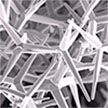 Researchers have developed an antiviral dressing material with visible-light-activated sterilizing properties that enables physical and chemical protection against viral agents like Herpes simplex. They re-engineered a common additive agent found in sunscreen (zinc oxide) to be self-sterilizing within a non-woven fibrous mats for herpes virus treatment. The self-sterilizing function creates a 'green' associated oxidant hydrogen peroxide (hydrogen peroxide), capable of eliminating harmful bacteria and viruses.
Researchers have developed an antiviral dressing material with visible-light-activated sterilizing properties that enables physical and chemical protection against viral agents like Herpes simplex. They re-engineered a common additive agent found in sunscreen (zinc oxide) to be self-sterilizing within a non-woven fibrous mats for herpes virus treatment. The self-sterilizing function creates a 'green' associated oxidant hydrogen peroxide (hydrogen peroxide), capable of eliminating harmful bacteria and viruses.
Oct 12th, 2021
 An interdisciplinary approach that integrates optics, bioengineering, and nanotechnology has led to the fabrication of a living optical hydrogel fiber with many applications, including cancer models, physical force sensing, and covid detection, among others. This work represents a simple and low-cost approach to fabricating optical fibers made from biological materials. These fibers can be easily modified for specific applications and don't require sophisticated equipment to generate relevant information. This method could be used for many practical sensing and biological modeling applications.
An interdisciplinary approach that integrates optics, bioengineering, and nanotechnology has led to the fabrication of a living optical hydrogel fiber with many applications, including cancer models, physical force sensing, and covid detection, among others. This work represents a simple and low-cost approach to fabricating optical fibers made from biological materials. These fibers can be easily modified for specific applications and don't require sophisticated equipment to generate relevant information. This method could be used for many practical sensing and biological modeling applications.
Oct 11th, 2021
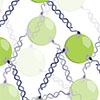 In addition to the plethora of functions such as storage of genetic information and regulation of its expression, DNA and RNA are also highly programmable biomaterials. DNA can be utilized to design short complementary sequences to be used as the linkers which bring together and organize other biological and inorganic materials. Quantum dots are one such inorganic candidate. Researchers now utilized DNA for the precise assembly of QDs into larger three-dimensional scaffolds.
In addition to the plethora of functions such as storage of genetic information and regulation of its expression, DNA and RNA are also highly programmable biomaterials. DNA can be utilized to design short complementary sequences to be used as the linkers which bring together and organize other biological and inorganic materials. Quantum dots are one such inorganic candidate. Researchers now utilized DNA for the precise assembly of QDs into larger three-dimensional scaffolds.
Aug 18th, 2021
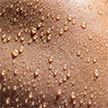 Self-charging biosupercapacitors (BSCs) that can store energy and be self-charged via chemical or solar energy conversion through bioreaction have recently attracted considerable attention. As human sweat also contains a high concentration of lactate biofuel, the harvesting and storage of the bioenergy in sweat holds the potential to provide the power for wearable electronics. A new wearable hybrid device functions as both a biofuel cell and a supercapacitor.
Self-charging biosupercapacitors (BSCs) that can store energy and be self-charged via chemical or solar energy conversion through bioreaction have recently attracted considerable attention. As human sweat also contains a high concentration of lactate biofuel, the harvesting and storage of the bioenergy in sweat holds the potential to provide the power for wearable electronics. A new wearable hybrid device functions as both a biofuel cell and a supercapacitor.
Jul 8th, 2021
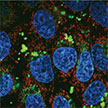 By using rod-shaped nanoparticles, in combination with inhibitors to other uptake pathways, researchers achieved targeting cancer cells over healthy cells.
The possible benefits from this novel technique are twofold: Restricting healthy cells from taking anticancer drugs to help reduce the side effects of drugs for patients; and helping overcome chemoresistance (the uptake of the chemo drug into healthy cells in the tumor setting is one of the main causes of chemoresistance).
By using rod-shaped nanoparticles, in combination with inhibitors to other uptake pathways, researchers achieved targeting cancer cells over healthy cells.
The possible benefits from this novel technique are twofold: Restricting healthy cells from taking anticancer drugs to help reduce the side effects of drugs for patients; and helping overcome chemoresistance (the uptake of the chemo drug into healthy cells in the tumor setting is one of the main causes of chemoresistance).
Jun 10th, 2021
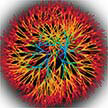 Nature has developed excellent biolubricating systems but onnce biolubrication for instance of synovial joints of osteoarthritis patients breaks down, relief has to come from partially or fully synthetic biolubricants - such as polymeric micro- or nanoparticle-based lubricants - that replace the depleted natural substances. Researchers have now demonstrated that phytoglycogen nanoparticles - single-molecule highly branched polysaccharides extracted from sweet corn kernels - are a highly effective biolubricating material.
Nature has developed excellent biolubricating systems but onnce biolubrication for instance of synovial joints of osteoarthritis patients breaks down, relief has to come from partially or fully synthetic biolubricants - such as polymeric micro- or nanoparticle-based lubricants - that replace the depleted natural substances. Researchers have now demonstrated that phytoglycogen nanoparticles - single-molecule highly branched polysaccharides extracted from sweet corn kernels - are a highly effective biolubricating material.
May 25th, 2021
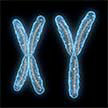 When experimental biomedical research results using only one sex are extrapolated to both sexes, unintended harmful consequences to the neglected sex can be the result. Nevertheless, it is still the case that only a small number of published articles report the sex of biosystems used in their study. Many researchers are still using only one sex of biosystems - e.g., cells, tissues, or animals - and apply the results to both males and females. And with the emergence of nanomedicine, the importance of sex in biomedical research has become even more obvious.
When experimental biomedical research results using only one sex are extrapolated to both sexes, unintended harmful consequences to the neglected sex can be the result. Nevertheless, it is still the case that only a small number of published articles report the sex of biosystems used in their study. Many researchers are still using only one sex of biosystems - e.g., cells, tissues, or animals - and apply the results to both males and females. And with the emergence of nanomedicine, the importance of sex in biomedical research has become even more obvious.
May 20th, 2021
 Inspired by the silk spinning of spiders, researchers have developed a facile strategy to artificially create natural, silk-like hierarchical fibers. They demonstrate the creation of biomimetic and highly bioactive materials by artificially manipulating the self-assembly of silk protein molecules. This work contributes to the understanding of the natural silk spinning process of spiders and provides a strategy for the design and development of advanced fibrous biomaterials for various applications.
Inspired by the silk spinning of spiders, researchers have developed a facile strategy to artificially create natural, silk-like hierarchical fibers. They demonstrate the creation of biomimetic and highly bioactive materials by artificially manipulating the self-assembly of silk protein molecules. This work contributes to the understanding of the natural silk spinning process of spiders and provides a strategy for the design and development of advanced fibrous biomaterials for various applications.
May 3rd, 2021
 Researchers have developed an antiviral dressing material with visible-light-activated sterilizing properties that enables physical and chemical protection against viral agents like Herpes simplex. They re-engineered a common additive agent found in sunscreen (zinc oxide) to be self-sterilizing within a non-woven fibrous mats for herpes virus treatment. The self-sterilizing function creates a 'green' associated oxidant hydrogen peroxide (hydrogen peroxide), capable of eliminating harmful bacteria and viruses.
Researchers have developed an antiviral dressing material with visible-light-activated sterilizing properties that enables physical and chemical protection against viral agents like Herpes simplex. They re-engineered a common additive agent found in sunscreen (zinc oxide) to be self-sterilizing within a non-woven fibrous mats for herpes virus treatment. The self-sterilizing function creates a 'green' associated oxidant hydrogen peroxide (hydrogen peroxide), capable of eliminating harmful bacteria and viruses.
 Subscribe to our Nanotechnology Spotlight feed
Subscribe to our Nanotechnology Spotlight feed





